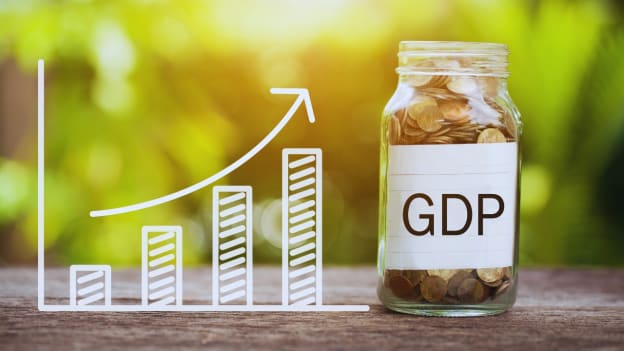India set to surpass Germany as World’s third-largest economy: NITI Aayog

India’s economic ascent continues as the country recently surpassed Japan to become the fourth-largest economy in the world. According to NITI Aayog CEO BVR Subrahmanyam, India is now projected to overtake Germany within the next two and a half to three years to claim the third spot in global economic rankings.
The statement was made on Saturday, where Subrahmanyam shared the updated economic outlook, citing that India’s economy has been revised upwards to ₹331 trillion for FY25, up from an earlier estimate of ₹324 trillion. This revision underscores the country’s continued resilience and growth despite a slowdown in GDP growth projections for the coming financial year.
According to the International Monetary Fund (IMF)’s April 2025 World Economic Outlook, India’s GDP for FY26 is expected to reach $4.187 trillion, overtaking Japan’s $4.186 trillion for the calendar year 2025. The margin between the two nations is expected to widen further. By FY27, India’s GDP is projected to hit $4.601 trillion, while Japan’s is forecast at $4.373 trillion.
Subrahmanyam stated, “We have already become the fourth-largest economy by overtaking Japan. We will be the third-largest by overtaking Germany in the next 2.5 to 3 years. And then we are targeting to become the second-largest by 2047.” The ambition is aligned with India’s long-term strategic economic vision to become a developed nation by its centenary of independence.
Currently, Germany holds the third position in global economic rankings with a nominal GDP slightly ahead of India. However, the trajectory of economic growth, consumption, investment, and demographic advantages all suggest India is rapidly closing the gap.
While India’s GDP growth is estimated to moderate to 6.5% in FY25 — compared to 9.2% in the previous year — it remains one of the fastest-growing major economies. This growth, driven by both strong domestic demand and structural economic reforms, supports India’s climb up the global economic ladder.
NITI Aayog’s revised economic outlook suggests stronger-than-expected fiscal performance and expanding sectors such as manufacturing, digital infrastructure, and services. Analysts also attribute the growth to the government’s continued push for capital expenditure, digital payments penetration, and initiatives like “Make in India” and “Atmanirbhar Bharat.”
India’s recent overtaking of Japan is symbolic beyond the numbers. Japan’s economy, which stood at $4 trillion in 2024, has long been seen as a benchmark for Asian economic strength. India’s ability to overtake it, and soon Germany, reflects a shifting global order where emerging markets are gaining significant ground.
The IMF projections also underscore India’s sustained momentum, despite global headwinds such as inflationary pressures, supply chain disruptions, and geopolitical uncertainties. With an expanding working-age population, tech-led innovation, and rising middle-class consumption, India’s economy is expected to maintain a robust upward trajectory.
The NITI Aayog chief’s optimism is backed by a range of macroeconomic indicators. India continues to attract foreign investment, increase digital inclusion, and execute long-term policy reforms. Moreover, its demographic advantage — with a median age under 30 — provides an edge in labour-intensive sectors, tech-driven innovation, and services exports.
However, challenges remain. Maintaining growth momentum while addressing income inequality, climate sustainability, infrastructure gaps, and employment generation are key to sustaining India’s economic ambitions. Policymakers will need to ensure that growth is inclusive and sustainable.














